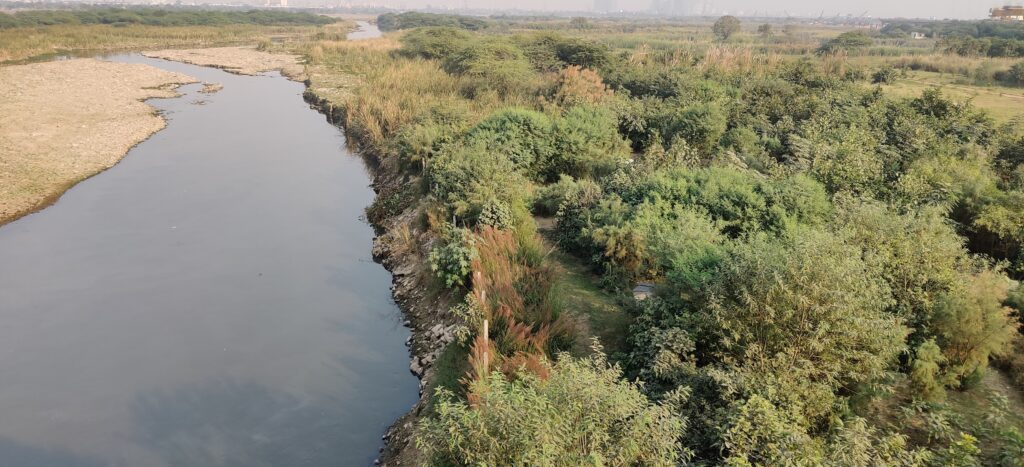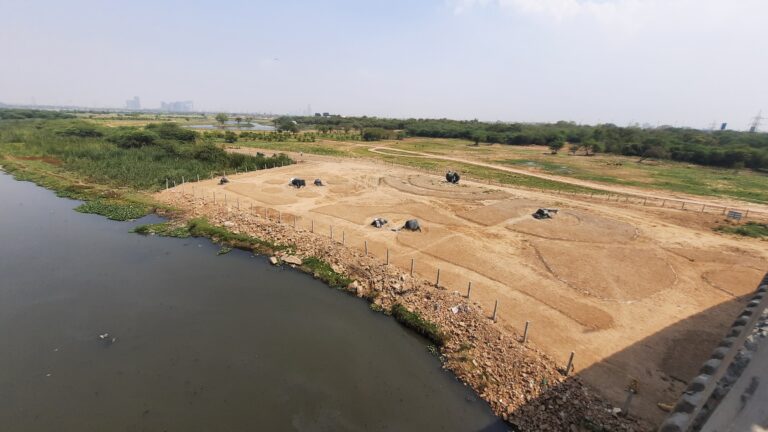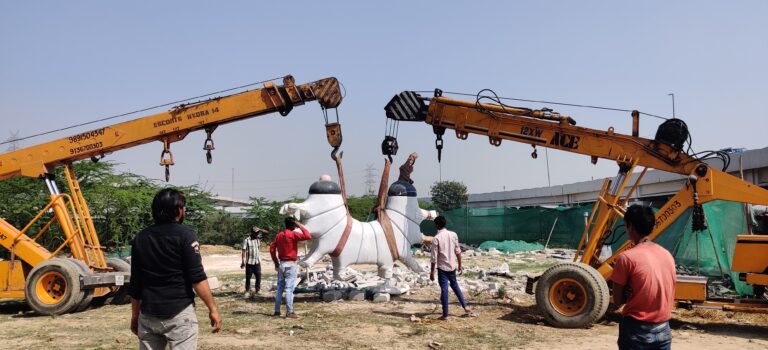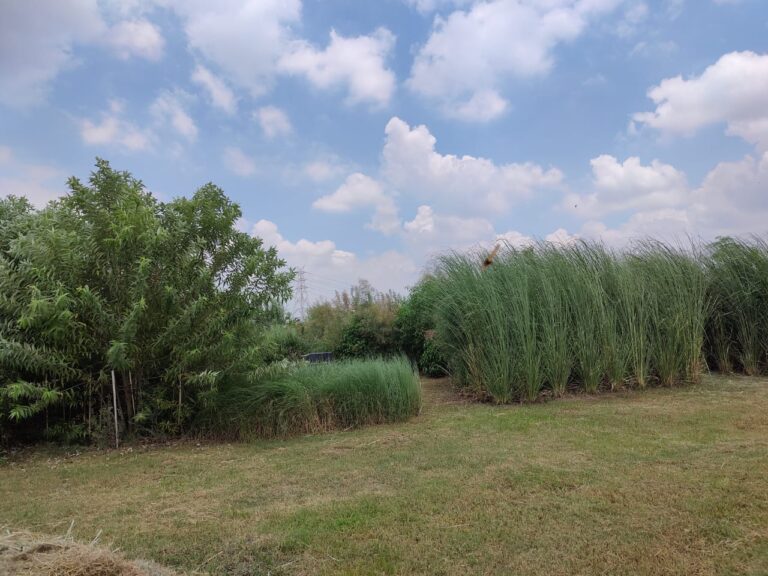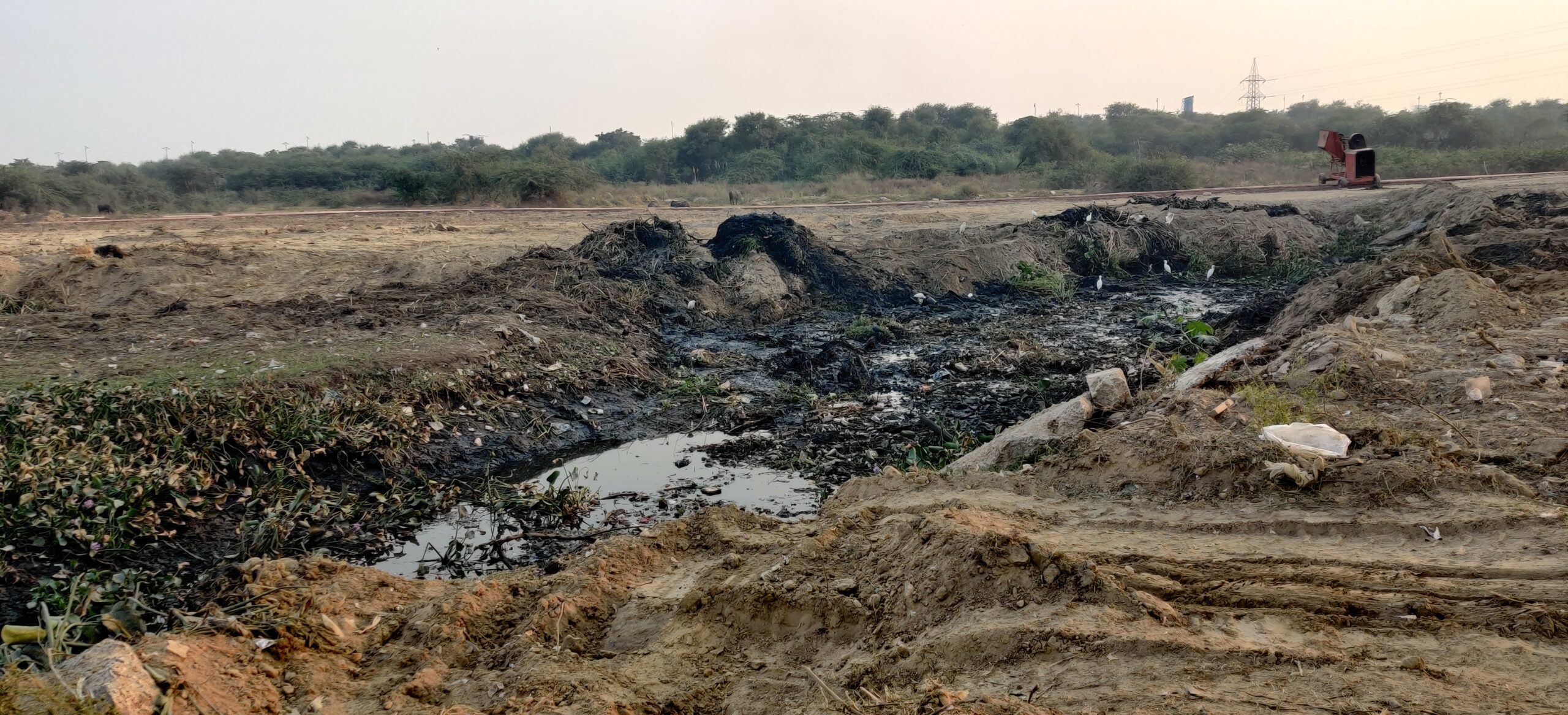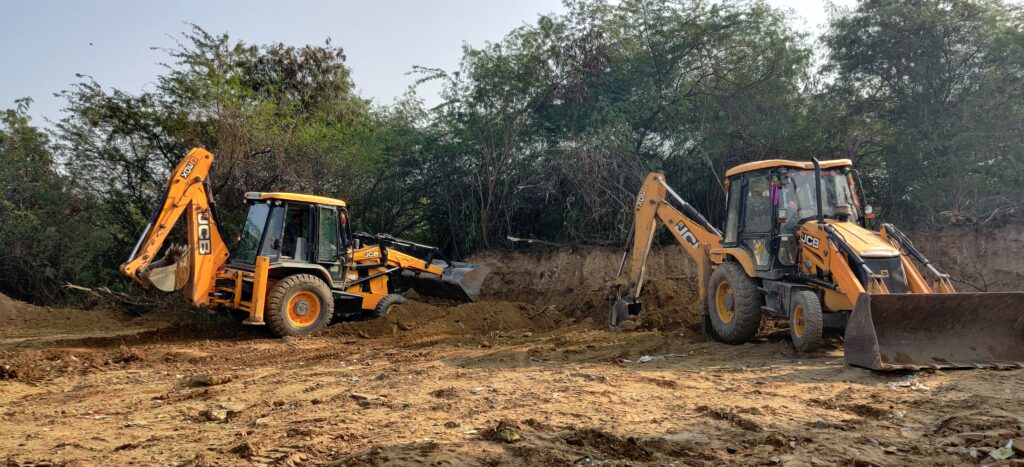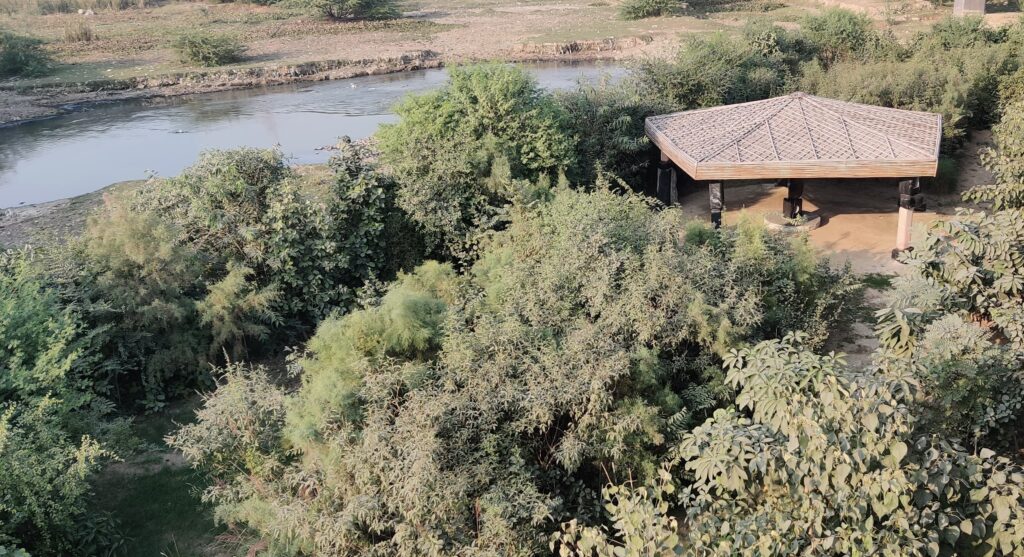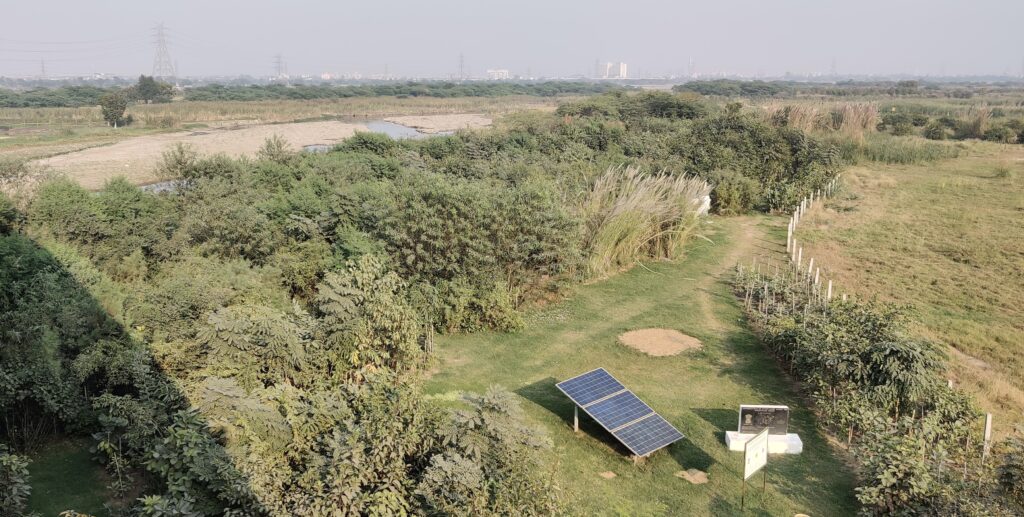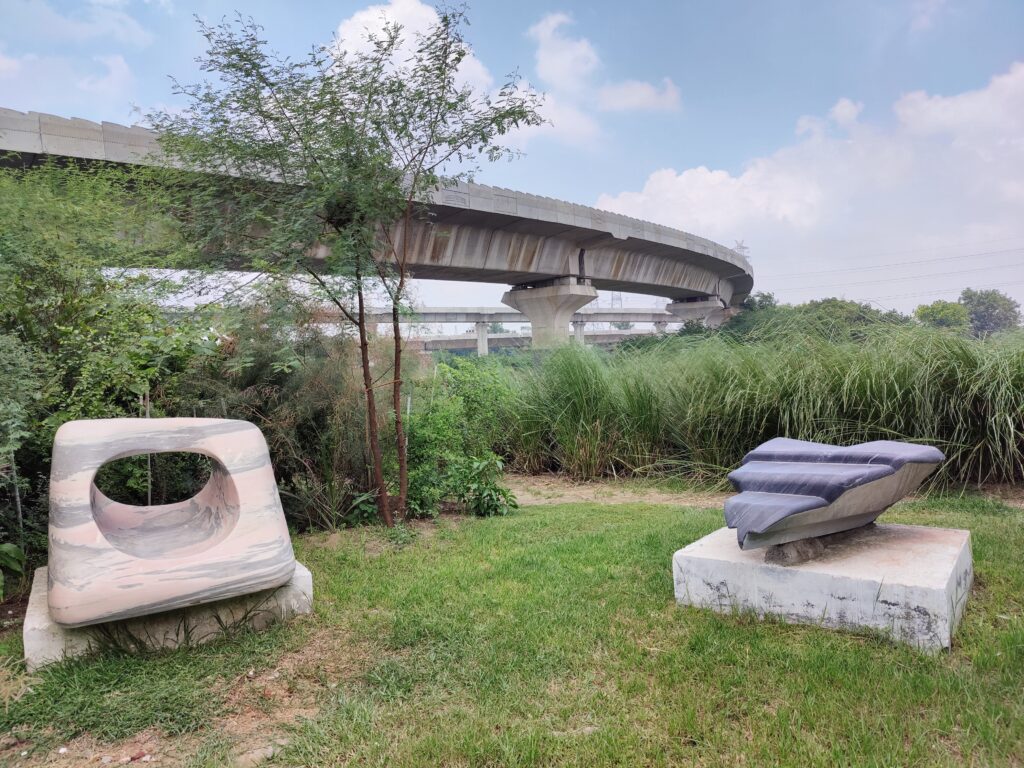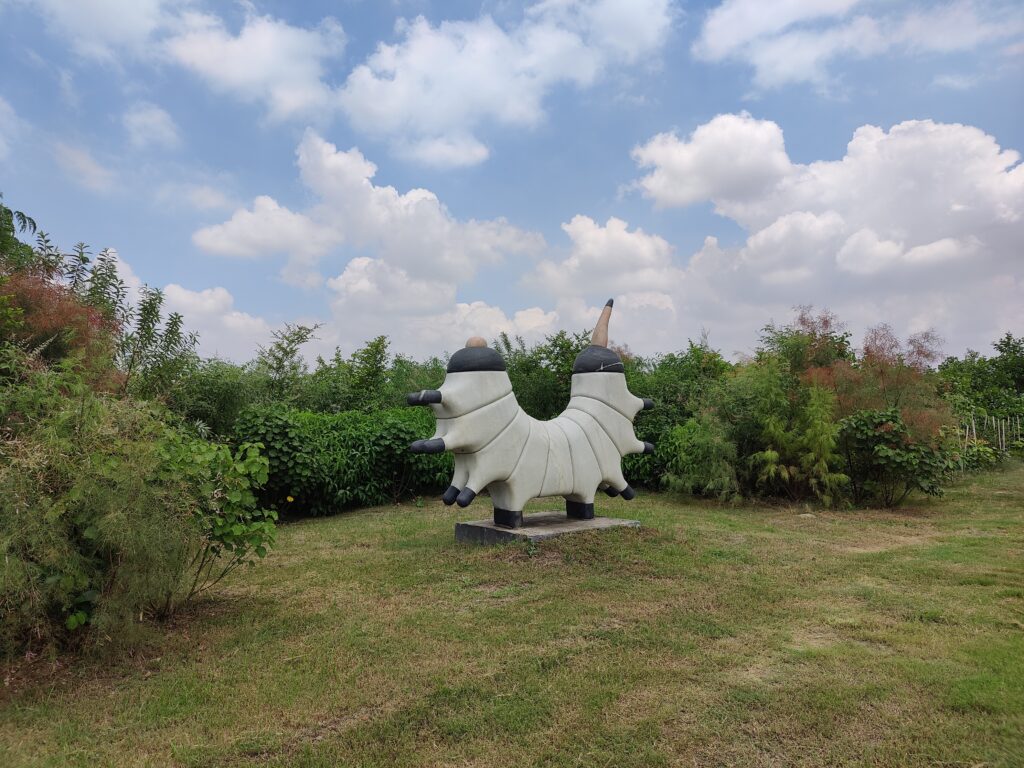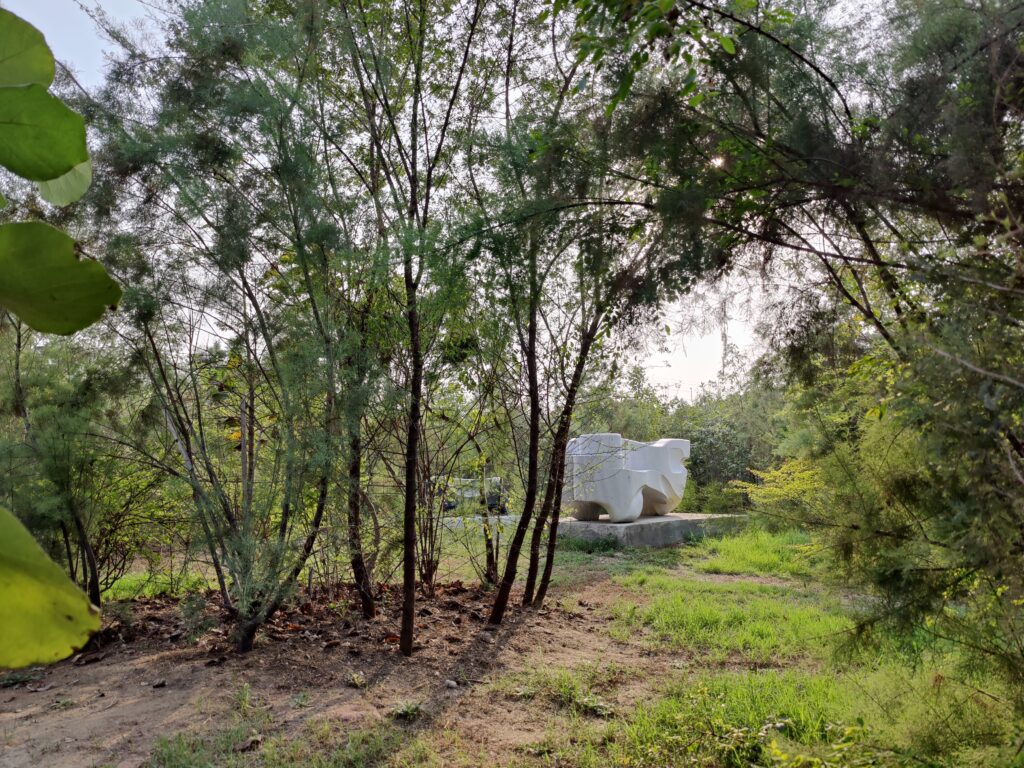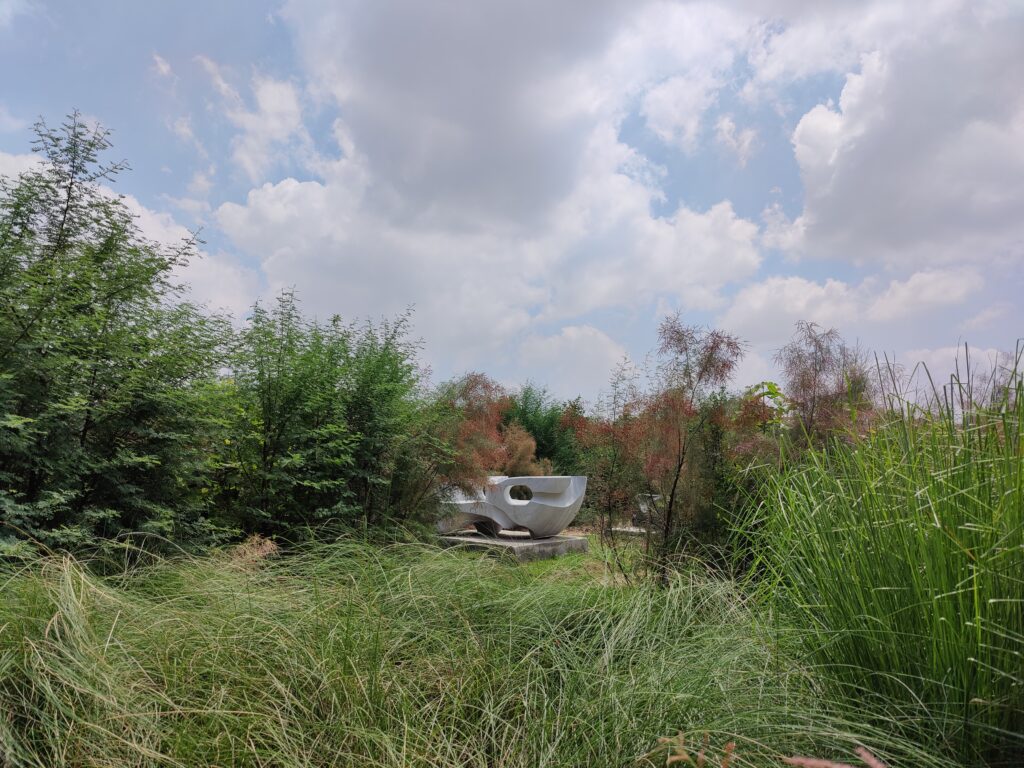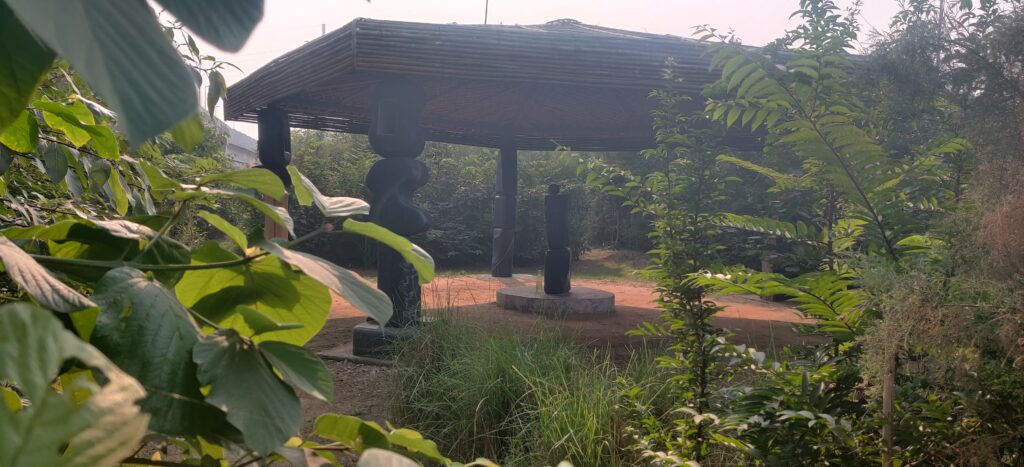As a response to this ecological crisis, a unique reforestation project was undertaken by us along the Barapullah drain near Sarai Kale Khan. This drain is one of the largest contributors to Yamuna’s pollution—carrying domestic sewage, solid waste, and industrial effluents, accounting for roughly 30% of the river’s total contamination. We were to prove ourselves on a 2-acre pilot project patch of degraded, lifeless land—choked by invasive species, sewage, and other pollutants. Today, this very stretch has been reclaimed and restored into a lush, self-sustaining forest of native riverine species.
The project was initiated in August 2020 through a collaboration between Indraprastha Gas Limited, the Office of the Principal Scientific Adviser to the Government of India, the Delhi Development Authority, Maruvan Foundation, and Afforestt. The transformation began with a massive clean-up drive. Multiple truckloads of debris, sewage, and the invasive Prosopis juliflora (Vilayati Kikar) were removed using JCBs and on-ground teams. The exposed land—scarred and eroded—was nourished with salvaged soil from nearby infrastructure projects, laying a new foundation for restoration.
Species selection was guided by Potential Native Vegetation (PNV) studies of the Yamuna floodplains, locally known as Khadar—an ecologically distinct riverine zone. The site was planted with a thoughtfully layered mix of Specialists and Generalists. Specialist species like native willows (Salix tetrasperma), Tamarix dioica, Plumbago zeylanica, Kirganelia reticulata, Bridelia retusa, Ixora pavetta, Mitragyna parvifolia, Phoenix sylvestris, Prosopis cineraria, Urena lobata and Clerodendrum phlomidis were reintroduced—many of which are rarely found in the wild today but crucial for floodplain recovery.
The planting followed natural forest logic—blending pioneers and climax species, shade-lovers and sun-seekers, herbs, shrubs, and grasses in ecological harmony. Over 10,000 plants from more than 50 native species now inhabit the site, including grasses like Saccharum benghalensis, Saccharum spontaneum, and Vetiveria zizanioides. The forest also integrates stone art, raw stone benches, and winding paths. Designed by landscape architect Puloma David and sculptor Robin David, this unique blend of forest and form is called Forestscaping®—where ecology meets aesthetics to inspire connection, curiosity, and care.
